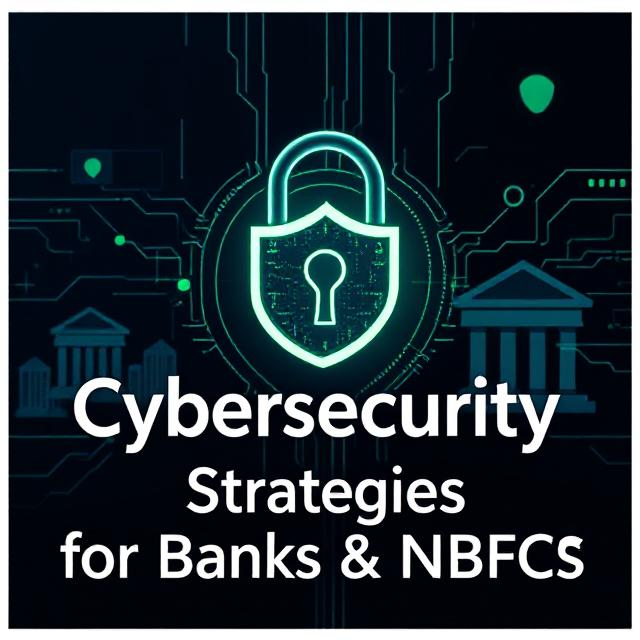Cybersecurity Strategies for Banks and NBFCs - Final Assessment Questions and Answers
In the ever-evolving world of cybersecurity, financial institutions such as banks and non-banking financial companies (NBFCs) must stay one step ahead of cybercriminals. In this blog post, we provide a comprehensive review of essential cybersecurity strategies for financial institutions, focusing on key concepts tested in the final assessment for cybersecurity professionals.
This guide covers the most crucial topics, including the latest advancements in encryption, multi-factor authentication (MFA), AI-driven fraud detection, and the Zero Trust security model. We break down each concept through a series of questions and answers designed to test your understanding of cybersecurity practices, with a special emphasis on the financial sector's unique challenges and solutions.
Key takeaways include:
- How to defend against sophisticated cyberattacks and protect sensitive financial data.
- The importance of regulatory compliance and the implementation of data loss prevention (DLP) tools.
- Effective strategies for securing third-party vendor relationships and mitigating supply chain risks.
- How to design disaster recovery plans that minimize downtime and ensure business continuity during a breach or attack.
Whether you're preparing for your cybersecurity certification or looking to refresh your knowledge, this blog post offers practical insights and answers to help you succeed. Dive into the essential cybersecurity strategies that every financial institution should know to protect against the growing threat landscape in the banking and NBFC sectors.
Final Assessment: Cybersecurity Strategies for Banks and NBFCs
By: Tahsin Hamim
What is a key component of effective fraud response in financial systems?
- Answer: Immediate account freezing and customer notification.
What aspect of the SolarWinds attack made it particularly damaging for financial institutions?
- Answer: Exploitation of SWIFT network vulnerabilities for fraudulent transactions.
In the context of the Zero Trust model, what does micro-segmentation achieve?
- Answer: Eliminates implicit trust between network segments.
What critical advantage does TLS 1.3 have over earlier versions for financial institutions?
- Answer: It removes obsolete algorithms and improves handshake efficiency.
Which key metric is used to measure acceptable downtime during disaster recovery?
- Answer: Recovery Time Objective (RTO).
How does behavioral biometrics enhance real-time fraud detection in financial systems?
- Answer: By comparing users' physical behaviors, such as typing speed and mouse movements.
What made the Bangladesh Bank heist significant in financial cybersecurity history?
- Answer: Exploitation of SWIFT network vulnerabilities for fraudulent transactions.
What is the role of Data Loss Prevention (DLP) tools in ensuring regulatory compliance?
- Answer: Preventing unauthorized access and exfiltration of sensitive data.
Which aspect of phishing attacks makes them highly effective in compromising financial institutions?
- Answer: Exploitation of human error and lack of awareness.
Why is multi-factor authentication (MFA) critical for protecting high-risk accounts in financial institutions?
- Answer: It provides additional layers of verification for access control.
- What made the Equifax breach a cautionary tale for financial institutions?
- Answer: The exploitation of an unpatched vulnerability in their web application.
- How does the Zero Trust model align with compliance requirements?
- Answer: By ensuring continuous monitoring and access control.
- What is a major benefit of deploying intrusion detection systems (IDS) in financial networks?
- Answer: Detecting and responding to unauthorized network activities.
- Which key challenge does Advanced Threat Protection (ATP) address in financial networks?
- Answer: Real-time detection and mitigation of unknown threats.
- How can financial institutions proactively mitigate supply chain risks?
- Answer: By performing due diligence on vendor security practices and updates.
- Which regulatory standard requires encryption of stored cardholder data?
- What is the main challenge of implementing PCI DSS compliance alongside security measures in financial institutions?
- Answer: Ensuring secure cardholder data storage without performance degradation.
- How does AI-based fraud detection differ from traditional rule-based systems?
- Answer: AI systems adapt dynamically to new fraud patterns without predefined rules.
- What is a critical weakness of relying solely on symmetric encryption in financial cybersecurity?
- Answer: Complexity of managing a secure key distribution process.
- Which encryption protocol is critical for securing HTTPS connections?
- Which specific challenge arises from relying on third-party vendors in financial cybersecurity?
- Answer: Supply chain attacks expose core systems to vulnerabilities.
- Why are tabletop exercises critical for incident response readiness?
- Answer: They simulate real-life scenarios to improve team preparedness.
- What is the function of post-incident analysis in cybersecurity?
- Answer: Refining response strategies by learning from previous incidents.
- What distinguishes Zero Trust from traditional security models in financial institutions?
- Answer: Dynamic, continuous access verification and micro-segmentation.
- Which encryption method is optimal for securing financial transactions in transit and why?
- Answer: TLS, for its combination of symmetric and asymmetric encryption.
